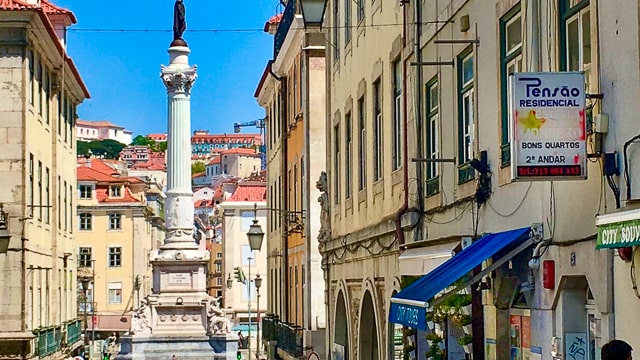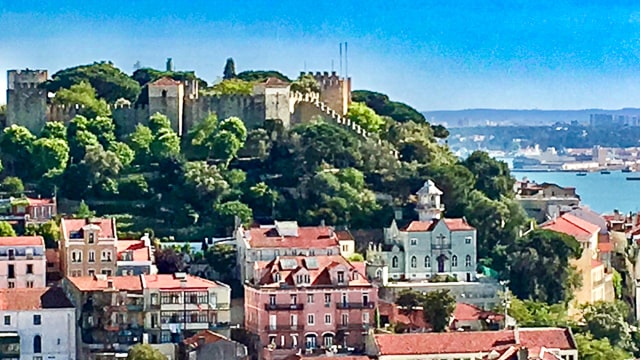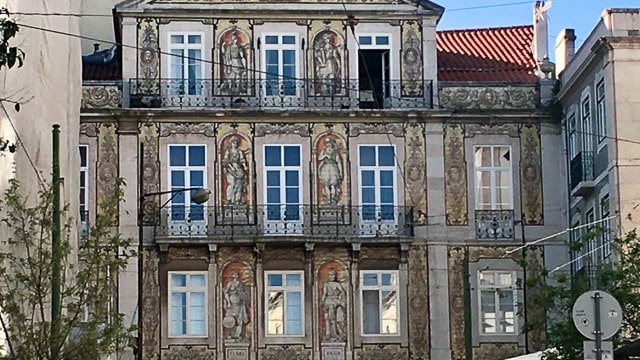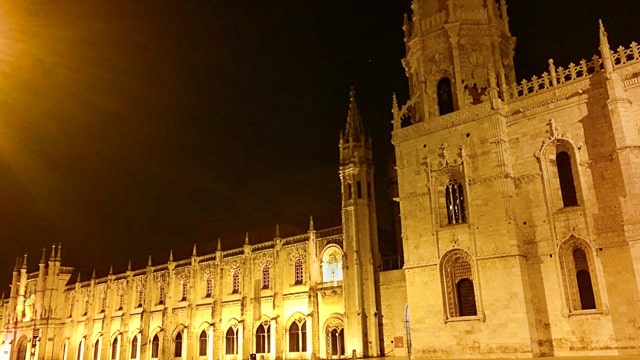…the most fun you can have on wheels
By Phyl Doppelt
Before the pandemic that swept the world, Lisbon was in a resurgence after years of dormancy. Laid out with verdant squares and open spaces, rich in history and tradition, filled with cultural treasures, it was besieged with tourists eager to visit.
One of the most scenic cities in Europe, Lisbon can now be toured by tuk-tuk.
The seven hills
My tuk-tuk guide Ludovico and I met in Rossio Square, with its distinctive wavy cobblestone surface. Ludovico speaks five languages fluently. In 2012, returning to Lisbon after twelve years abroad working as a history professor, he noticed tuk-tuks in among the traffic carrying tourists. With a passion for Lisbon and an extensive background in its history and culture, he decided to have some fun and become a tuk-tuk guide.
Stopping to collect another guest, we were off to experience the Seven Hills of Lisbon. Bumping along the streets, dodging the hordes of pedestrians and the famous red and yellow trams, we were hanging on tight as we rounded each corner. This is the best way to get an overview of the city because the tuk-tuk can negotiate the network of little streets with ease – especially in the hands of a skilled driver.
Rossio and Baixa
Moving quickly through the town, we passed Rossio with its many cafes and restaurants. Baixa, with wide avenues reminiscent of Paris and Commerce Square, one of the most beautiful squares in Lisbon, surrounded on three sides by historical buildings.

Sao Roque Church
The steep hills seemed effortless in the tuk-tuk. We arrived at Sao Roque Church with its whitewashed exterior, giving no hint of the interior opulence. A 16th Century baroque masterpiece described as the most beautiful church in Portugal, the chapels are layered with gold leaf and further embellished with precious stones of lapis lazuli, amethyst, alabaster, and agate.

Saint Jorge’s Castle and Sao Vicente Monastery
There we were, chugging up another hill, listening to Ludovico’s commentary, as we moved through the traffic. Portas do Sol is one of the highest viewpoints overlooking Saint Jorge’s Castle and the Sao Vincent Monastery. We paused to enjoy a postcard-perfect view of Lisbon.
Legend of the lovers’ locks
A wire fence protecting us from falling down the hillside had many locks attached to it. A local legend says lovers who visit here can swear undying love by attaching a lock to the fence. They throw away the key, symbolizing they’ve locked their love inside, forever.

Graca
Returning to the tuk-tuk, we journeyed on to Graca. This well preserved, historic neighborhood, has steep, narrow streets, a few lovely tiled buildings, many bars, restaurants, and incredible street art. The tuk-tuk was parked on a beautiful square near a charming tiled building, a bar where people were socializing. They knocked back shots of Ginginha, the local cherry liqueur. A cafe with tables on the sidewalk was a very local scene. This area leads to the highest neighborhood in Lisbon and requires strong legs to manage the inclines.
Fado Museum
Our next destination was the Alfama neighborhood, passing the Fado Museum on the way. Fado, a genre of music, originated in the Alfama in the 1820s—it is melancholy and haunting, accompanied by mandolins and guitars. Fado is intrinsically Portuguese, and an essential part of the Lisbon experience.
Alfama
Alfama is another of the older, ethnically diverse, and historically interesting Lisbon neighborhoods. The familiar narrow winding cobblestone streets are where neighbors chat while hanging out the washing on their balconies. It was built in the 8th Century during the Muslim conquest of Portugal and remains intact from that period. Alfama survived the great earthquake of 1755 that destroyed most of Lisbon. The Alfama is on one of the highest hilltops, overlooking the Tagus River. Tucked in between the houses are little shops, restaurants, bars, and galleries.

Belem
At our final stop in Belem, near the heavily-carved 16th-century Jeronimo Monastery, Ludovico invited us to join him in a genuine Portuguese moment. Our driver took out a bottle of Ginjinha, the local cherry liqueur, and a box of Pasteis de Nate (custard tarts) to be enjoyed as a farewell celebration to Lisbon. We stood in the street basking in the beauty of the tour we accomplished, eating the pastries, sipping the Ginjinha with an incomparable view of the Belem Tower and the ocean as a backdrop.
The tour was about two hours. With Ludovico’s commentary, we learned of the changes that have brought Lisbon out of its long sleep, transforming it into one of the most vibrant cities of Europe.
About Phyl Doppelt~ Curiosity drives Phyl. Her interests are extensive. With a background in design and hospitality, Phyl’s passion is architecture and the adaptive re-use of space. She has lived on three continents—Africa, Europe, and the US. She has always enjoyed traveling, even in her own backyard of Marin County California. Long before the internet, Phyl tracked every print lead, entering them in index books that ranged across many interests for future exploration.
She is a mother, a grandmother, and now a retiree. Doppelt travels solo. She says, “I know that if I don’t do it now, I never will.” ~TPM
